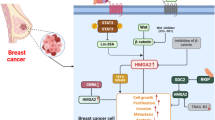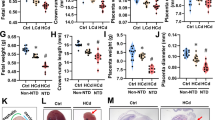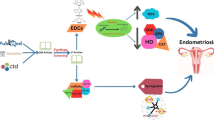Abstract
Benzo(a)pyrene (BaP) is a ubiquitous environmental endocrine-disrupting chemical that is known to have toxic effects on reproduction. However, the underlying mechanisms describing how BaP and its metabolite benzo[a]pyrene-7, 8-diol-9, 10-epoxide (BPDE) induce recurrent pregnancy loss (RPL) are still largely unclear. In this study, we identified a novel long non-coding RNA (lnc-HZ07, NCBI MT936329) that was upregulated in trophoblast cells after exposure to BPDE, and lnc-HZ07 expression was significantly higher in RPL villous tissues than that in control villous tissues. Knockdown of lnc-HZ07 promoted trophoblast cell migration, whereas overexpression of lnc-HZ07 inhibited trophoblast cell migration. Further study showed that lnc-HZ07 inhibited trophoblast migration by downregulating matrix metalloproteinase 2 (MMP2) expression via dephosphorylation of AKT. These results demonstrated a novel regulatory pathway in which BaP downregulated AKT phosphorylation and inhibited MMP2 expression by upregulating lnc-HZ07, suggesting that lnc-HZ07 could be considered as a potential pathological marker of BaP-induced RPL and therapeutic target for this disease.





Similar content being viewed by others
Change history
21 September 2022
A Correction to this paper has been published: https://doi.org/10.1007/s43032-022-01084-w
References
Cha J, Sun X, Dey SK. Mechanisms of implantation: strategies for successful pregnancy. Nat Med. 2012;18(12):1754–67. https://doi.org/10.1038/nm.3012.
Red-Horse K, Zhou Y, Genbacev O, Prakobphol A, Foulk R, McMaster M, et al. Trophoblast differentiation during embryo implantation and formation of the maternal-fetal interface. J Clin Investig. 2004;114(6):744–54. https://doi.org/10.1172/jci200422991.
Mor G, Aldo P, Alvero AB. The unique immunological and microbial aspects of pregnancy. Nat Rev Immunol. 2017;17(8):469–82. https://doi.org/10.1038/nri.2017.64.
James JL, Carter AM, Chamley LW. Human placentation from nidation to 5 weeks of gestation. Part I: What do we know about formative placental development following implantation? Placenta. 2012;33(5):327–34. https://doi.org/10.1016/j.placenta.2012.01.020.
Staun-Ram E, Shalev E. Human trophoblast function during the implantation process. Reprod Biol Endocrinol. 2005;3:56. https://doi.org/10.1186/1477-7827-3-56.
Cakmak H, Taylor HS. Implantation failure: molecular mechanisms and clinical treatment. Hum Reprod Update. 2011;17(2):242–53. https://doi.org/10.1093/humupd/dmq037.
Kim KH, Jahan SA, Kabir E. A review of diseases associated with household air pollution due to the use of biomass fuels. J Hazard Mater. 2011;192(2):425–31. https://doi.org/10.1016/j.jhazmat.2011.05.087.
Luderer U, Meier MJ, Lawson GW, Beal MA, Yauk CL, Marchetti F. In utero exposure to benzo[a]pyrene induces ovarian mutations at doses that deplete ovarian follicles in mice. Environ Mol Mutagen. 2019;60(5):410–20. https://doi.org/10.1002/em.22261.
Anthony E. Archibong A FI, Aramandla Rameshb, Michael Greenwoodb, Tultul Nayyarb, Prapaporn Kopsombut B, Darryl B. Hoodb, Alfred M. Nyandab. Alteration of pregnancy related hormones and fetal survival in F-344 rats exposed by inhalation to benzo(a)pyrene.
Yi T, Liu M, Li X, Liu X, Ding Y, He J, et al. Benzo(a)pyrene inhibits endometrial cell apoptosis in early pregnant mice via the WNT5A pathway. J Cell Physiol. 2019;234(7):11119–29. https://doi.org/10.1002/jcp.27762.
Einaudi L, Courbiere B, Tassistro V, Prevot C, Sari-Minodier I, Orsiere T, et al. In vivo exposure to benzo(a)pyrene induces significant DNA damage in mouse oocytes and cumulus cells. Hum Reprod. 2014;29(3):548–54. https://doi.org/10.1093/humrep/det439.
Wu J, Hou H, Ritz B, Chen Y. Exposure to polycyclic aromatic hydrocarbons and missed abortion in early pregnancy in a Chinese population. Sci Total Environ. 2010;408(11):2312–8. https://doi.org/10.1016/j.scitotenv.2010.02.028.
Wang R, Wang W, Ao L, Wang Z, Hao X, Zhang H. Benzo[a]pyrene-7,8-diol-9,10-epoxide suppresses the migration and invasion of human extravillous trophoblast HTR-8/SVneo cells by down-regulating MMP2 through inhibition of FAK/SRC/PI3K/AKT pathway. Toxicology. 2017;386:72–83. https://doi.org/10.1016/j.tox.2017.05.008.
Tian Z, Wang R, Zhang X, Deng B, Mi C, Liang T, et al. Benzo[a]pyrene-7, 8-diol-9, 10-epoxide suppresses the migration and invasion of human extravillous trophoblast Swan 71 cells due to the inhibited filopodia formation and down-regulated PI3K/AKT/CDC42/PAK1 pathway mediated by the increased miR-194-3p. Toxicol Sci. 2018;166(1):25–38. https://doi.org/10.1093/toxsci/kfy182.
Mercer TR, Dinger ME, Mattick JS. Long non-coding RNAs: insights into functions. Nat Rev Genet. 2009;10(3):155–9. https://doi.org/10.1038/nrg2521.
Esteller M. Non-coding RNAs in human disease. Nat Rev Genet. 2011;12(12):861–74. https://doi.org/10.1038/nrg3074.
Kopp F, Mendell JT. Functional classification and experimental dissection of long noncoding RNAs. Cell. 2018;172(3):393–407. https://doi.org/10.1016/j.cell.2018.01.011.
Wang N, Li R, Xue M. Potential regulatory network in the PSG10P/miR-19a-3p/IL1RAP pathway is possibly involved in preeclampsia pathogenesis. J Cell Mol Med. 2019;23(2):852–64. https://doi.org/10.1111/jcmm.13985.
Cheng D, Jiang S, Chen J, Li J, Ao L, Zhang Y. Upregulated long noncoding RNA Linc00261 in pre-eclampsia and its effect on trophoblast invasion and migration via regulating miR-558/TIMP4 signaling pathway. J Cell Biochem. 2019;120(8):13243–53. https://doi.org/10.1002/jcb.28598.
Zhang Y, Jin F, Li XC, Shen FJ, Ma XL, Wu F, et al. The YY1-HOTAIR-MMP2 signaling axis controls trophoblast invasion at the maternal-fetal interface. Mol Ther. 2017;25(10):2394–403. https://doi.org/10.1016/j.ymthe.2017.06.028.
Xu Z, Tian P, Guo J, Mi C, Liang T, Xie J, et al. Lnc-HZ01 with m6A RNA methylation inhibits human trophoblast cell proliferation and induces miscarriage by up-regulating BPDE-activated lnc-HZ01/MXD1 positive feedback loop. Sci Total Environ. 2021;776:145950. https://doi.org/10.1016/j.scitotenv.2021.145950.
Liang T, Xie J, Zhao J, Huang W, Xu Z, Tian P, et al. Novel lnc-HZ03 and miR-hz03 promote BPDE-induced human trophoblastic cell apoptosis and induce miscarriage by upregulating p53/SAT1 pathway. Cell Biol Toxicol. 2021. https://doi.org/10.1007/s10565-021-09583-3.
Li W, Liu D, Chang W, Lu X, Wang YL, Wang H, et al. Role of IGF2BP3 in trophoblast cell invasion and migration. Cell Death Dis. 2014;5:e1025. https://doi.org/10.1038/cddis.2013.545.
Tao Y, Liu D, Mo G, Wang H, Liu XJ. Peri-ovulatory putrescine supplementation reduces embryo resorption in older mice. Hum Reprod. 2015;30(8):1867–75. https://doi.org/10.1093/humrep/dev130.
Gupta SK, Malhotra SS, Malik A, Verma S, Chaudhary P. Cell signaling pathways involved during invasion and syncytialization of trophoblast cells. Am J Reprod Immunol. 2016;75(3):361–71. https://doi.org/10.1111/aji.12436.
Srogi K. Monitoring of environmental exposure to polycyclic aromatic hydrocarbons: a review. Environ Chem Lett. 2007;5(4):169–95. https://doi.org/10.1007/s10311-007-0095-0.
Yu Y, Li Q, Wang H, Wang B, Wang X, Ren A, et al. Risk of human exposure to polycyclic aromatic hydrocarbons: a case study in Beijing. China Environ Pollut. 2015;205:70–7. https://doi.org/10.1016/j.envpol.2015.05.022.
Topinka J, Milcova A, Libalova H, Novakova Z, Rossner P, Balascak I, et al. Biomarkers of exposure to tobacco smoke and environmental pollutants in mothers and their transplacental transfer to the foetus. Part I: Bulky DNA adducts. Mutation Research/Fundamental and Molecular Mechanisms of Mutagenesis. 2009;669(1-2):13–9. https://doi.org/10.1016/j.mrfmmm.2009.04.011.
Domingo JL, Nadal M. Human dietary exposure to polycyclic aromatic hydrocarbons: a review of the scientific literature. Food Chem Toxicol. 2015;86:144–53. https://doi.org/10.1016/j.fct.2015.10.002.
Ling H, Sayer JM, Plosky BS, Yagi H, Boudsocq F, Woodgate R, et al. Crystal structure of a benzo[a]pyrene diol epoxide adduct in a ternary complex with a DNA polymerase. Proc Natl Acad Sci U S A. 2004;101(8):2265–9. https://doi.org/10.1073/pnas.0308332100.
Mathiesen L, Rytting E, Mose T, Knudsen LE. Transport of benzo[alpha]pyrene in the dually perfused human placenta perfusion model: effect of albumin in the perfusion medium. Basic Clin Pharmacol Toxicol. 2009;105(3):181–7. https://doi.org/10.1111/j.1742-7843.2009.00431.x.
Jedrychowski WA, Majewska R, Spengler JD, Camann D, Roen EL, Perera FP. Prenatal exposure to fine particles and polycyclic aromatic hydrocarbons and birth outcomes: a two-pollutant approach. Int Arch Occup Environ Health. 2017;90(3):255–64. https://doi.org/10.1007/s00420-016-1192-9.
Xie Y, Abdallah ME, Awonuga AO, Slater JA, Puscheck EE, Rappolee DA. Benzo(a)pyrene causes PRKAA1/2-dependent ID2 loss in trophoblast stem cells. Mol Reprod Dev. 2010;77(6):533–9. https://doi.org/10.1002/mrd.21178.
Jauniaux E, Burton GJ. Pathophysiology of histological changes in early pregnancy loss. Placenta. 2005;26(2-3):114–23. https://doi.org/10.1016/j.placenta.2004.05.011.
Staun-Ram E, Goldman S, Gabarin D, Shalev E. Expression and importance of matrix metalloproteinase 2 and 9 (MMP-2 and -9) in human trophoblast invasion. Reprod Biol Endocrinol. 2004;2:59. https://doi.org/10.1186/1477-7827-2-59.
Seval Y, Akkoyunlu G, Demir R, Asar M. Distribution patterns of matrix metalloproteinase (MMP)-2 and -9 and their inhibitors (TIMP-1 and TIMP-2) in the human decidua during early pregnancy. Acta Histochem. 2004;106(5):353–62. https://doi.org/10.1016/j.acthis.2004.07.005.
Zhang SM, Tian FJ, Zeng WH, Ma XL, Ren JB, Lin Y. XCL1-XCR1 pathway promotes trophoblast invasion at maternal-fetal interface by inducing MMP-2/MMP-9 activity. Am J Reprod Immunol. 2018;80(3):e12990. https://doi.org/10.1111/aji.12990.
Zhang H, Hou L, Li CM, Zhang WY. The chemokine CXCL6 restricts human trophoblast cell migration and invasion by suppressing MMP-2 activity in the first trimester. Hum Reprod. 2013;28(9):2350–62. https://doi.org/10.1093/humrep/det258.
Funding
This study was supported by the National Key Research and Development Program of China (2018YFC1002804), National Natural Science Foundation of China (81771545 and 82073589), the Guangdong Basic and Applied Basic Research Foundation (2020B1515020001), and the Special Fund for Clinical Research of Chinese Medical Association (18010180747).
Author information
Authors and Affiliations
Contributions
X. Zhao and H. Zhang designed the framework of the study and wrote the manuscript. Y. Ye and S. Jiang conceived, conducted experiments, and wrote the manuscript. M. Ding, M. Hou, and T. Du organized sampling and collected human villous tissue and clinical statistics. C. Mi, T. Liang, and J. Xie analyzed statistical significance of RNAs. H. Zhong and W. Xu coordinated the study. All authors reviewed and approved the final manuscript.
Corresponding authors
Ethics declarations
Conflict of Interest
The authors declare no competing interests.
Additional information
Publisher’s Note
Springer Nature remains neutral with regard to jurisdictional claims in published maps and institutional affiliations.
This article was updated to add missing equal contribution note.
Rights and permissions
Springer Nature or its licensor holds exclusive rights to this article under a publishing agreement with the author(s) or other rightsholder(s); author self-archiving of the accepted manuscript version of this article is solely governed by the terms of such publishing agreement and applicable law.
About this article
Cite this article
Ye, Y., Jiang, S., Du, T. et al. Environmental Pollutant Benzo[a]pyrene Upregulated Long Non-coding RNA HZ07 Inhibits Trophoblast Cell Migration by Inactivating PI3K/AKT/MMP2 Signaling Pathway in Recurrent Pregnancy Loss. Reprod. Sci. 28, 3085–3093 (2021). https://doi.org/10.1007/s43032-021-00630-2
Received:
Accepted:
Published:
Issue Date:
DOI: https://doi.org/10.1007/s43032-021-00630-2




